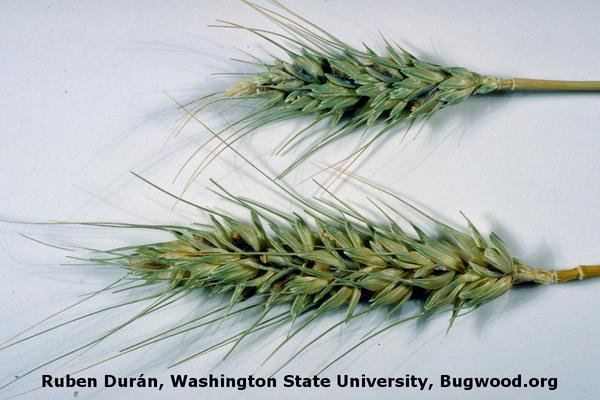
New Bunt of Wheat (Karnal Bunt of Wheat)
New Bunt of Wheat (Karnal Bunt of Wheat)
History and Importance:
- Reported in 1931 on wheat, grown near Karnal, India
- Found in all major wheat-growing states of India, as well as in Pakistan, Iraq, Mexico, and Afghanistan
- Losses ranging from 20-40%
Etiology:
Causal organism: Neovosia indica
Order: Ustilaginales
Family: Tillitiaceae
Symptoms:
- Only few seeds per head infected
- Not all heads on a single plant are infected
- Disease is difficult to detect in the field
- Only a part of the germ end converted into a black powdery spore mass,
- Extreme cases, the entire kernel is converted into spores
- Rotten fish smell from the diseased field
Disease cycle:
- Smut fungus Tilletia indica (also known as Neovossia indica) spread by spores
- Spores can be carried in soil and on a variety of surfaces, including seed and other plant parts & also windborne
- Uplifted during the burning of wheat fields, and areas downwind may become contaminated if the spores remain viable
Epidemiology:
- 15–25° C, RH >82 %
Management:
- Seed treatment with PCNB and carboxin + thiram (Vitavax-Thiram)
- Disinfesting seeds in a 1.5% solution of sodium hypochlorite (i.e., 1 part of household bleach to 2 parts of water) plus Tween 20 with agitation for 10 minutes followed by rinsing
- Resistant varieties,Watan, Sehar, Bk-2000


